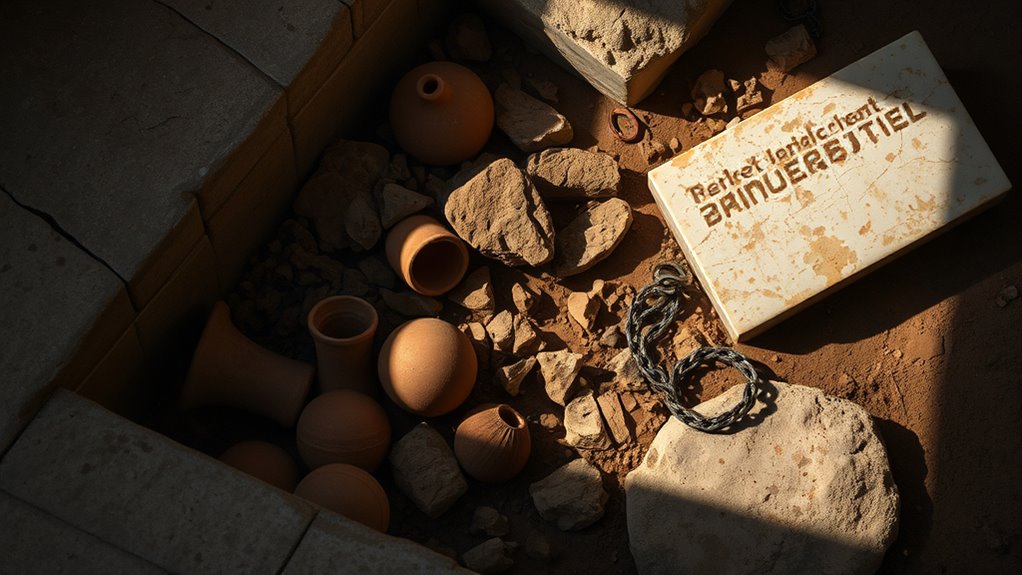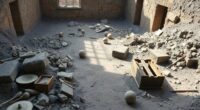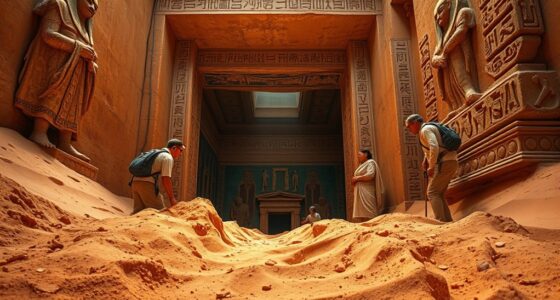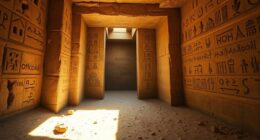Archaeological evidence shows that Spartacus’s followers endured brutal training, which built resilience and combat skills. The environment of gladiator schools and Roman military tactics shaped how they fought and survived. Their ability to adapt came from harsh conditioning and strategic use of terrain. Understanding these archaeological findings helps you see Spartacus’s true strength and tactics. If you keep exploring, you’ll uncover more about how these factors influenced the slave revolt’s course.
Key Takeaways
- Archaeological finds reveal the training and living conditions of gladiators, shedding light on Spartacus’s combat skills.
- Excavations of Roman military sites illustrate tactics and discipline that influenced Spartacus’s rebellion.
- Artifacts and ruins from gladiator schools highlight the brutal training environments that fostered resilience.
- Discoveries of battlefield remains help understand terrain and tactical challenges faced by Spartacus and Roman forces.
- Archaeological evidence clarifies the social and military context behind Spartacus’s rise and the slave revolt.
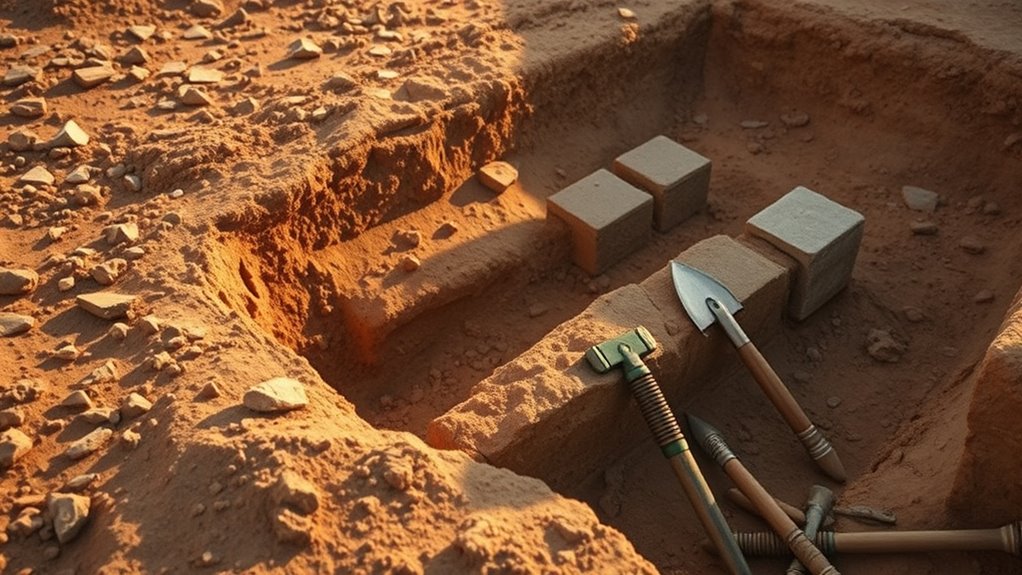
Few figures from ancient history inspire as much intrigue and legend as Spartacus. When you explore his story, you quickly realize that understanding the true man behind the myth requires examining the tactics and training that shaped him. Archaeological findings shed light on the military strategies employed by the Romans and the brutal training methods used to prepare gladiators, giving you a clearer picture of the environment Spartacus emerged from.
Roman military tactics, known for their discipline and adaptability, played a vital role in both their victories and their struggles against rebels like Spartacus. The Romans relied on highly organized legions, employing formations like the testudo and manipular tactics to maximize their battlefield effectiveness. As you study these tactics, it becomes clear how Spartacus and his followers, many of whom were trained as gladiators, faced a formidable foe. The Romans’ ability to quickly adapt to different combat situations and their disciplined use of terrain gave them an advantage, yet Spartacus managed to exploit weaknesses and sustain a significant rebellion. This strategic battle of wits and might highlights the importance of understanding Roman military tactics to truly grasp the challenges faced by the slave army.
In addition, archaeological evidence reveals the brutal gladiator training methods that shaped Spartacus’s early life. Gladiators underwent rigorous physical conditioning, often in specialized schools called *ludi*, where they were subjected to harsh regimes designed to forge fighters capable of entertaining and intimidating. These training methods included exhaustive drills, combat simulations, and strict discipline—elements that Spartacus would have experienced firsthand. Such brutal preparation not only honed their physical prowess but also fostered resilience and combat skills that Spartacus later used against the Roman army. Recognizing these training methods helps you appreciate the toughness and fighting spirit Spartacus and his followers brought into their rebellion. Furthermore, understanding the training environments where gladiators learned their craft can provide deeper insights into their resilience and combat effectiveness.
Frequently Asked Questions
What Was Spartacus’s True Origin and Background?
You might wonder about Spartacus’s true origin and background. He was a Roman gladiator and a Thracian warrior, which means he came from the region of Thrace in southeastern Europe. His background likely involved fighting as a gladiator, and he probably had experience as a soldier before becoming a rebel leader. While details are scarce, his Thracian roots and fighting skills shaped his role in the slave revolt.
How Accurate Are the Historical Accounts of Spartacus’s Revolt?
You might wonder how accurate the historical accounts of Spartacus’s revolt are today. Many sources blend historical myth with literary representations, making it tricky to separate fact from fiction. While some details are supported by archaeological evidence, much of what’s known comes from later writings that romanticize his story. So, you should approach these accounts critically, recognizing that they often reflect more cultural storytelling than strict historical accuracy.
What Archaeological Evidence Has Been Found Related to Spartacus?
Imagine uncovering a treasure trove of history—archaeologists have indeed found slave graves and battlefield artifacts linked to Spartacus’s rebellion. These discoveries offer a vivid glimpse into the brutal slave life and fierce battles. While no direct evidence of Spartacus himself has emerged, these relics help piece together the chaos and courage of that era, making history feel alive beneath your fingertips.
Did Spartacus Have Any Political or Ideological Goals?
You might wonder if Spartacus had political motives or ideological aims. Historical sources suggest he sought freedom from slavery and aimed to challenge Roman authority, indicating clear political motives. His rebellion wasn’t just about escaping but also about resisting oppression, reflecting ideological aims for justice and equality. By leading a significant slave revolt, Spartacus symbolized resistance against tyranny, making his actions driven by both political motives and ideological principles.
How Did Spartacus’s Revolt Influence Later Slave Uprisings?
You see, Spartacus’s revolt inspired future slave resistance by demonstrating that oppressed people could challenge their masters. His rebellion created a revolutionary legacy, fueling hope and defiance among enslaved populations. Though it didn’t lead to immediate widespread change, Spartacus’s fight symbolized resistance, encouraging others to stand up against injustice. His story reminds us that even in dire circumstances, the spirit of rebellion can ignite lasting resistance.
Conclusion
So, as you dig into the archaeology behind Spartacus, you see he’s more than just a legend—he’s a living thread in history’s tapestry. The truth pulls back the curtain on a man who fought not just for himself, but for freedom’s flame that still burns today. His story is a beacon, shining through time like a lighthouse guiding us past myths into reality. Remember, history isn’t just written; it’s unearthed, one artifact at a time.
